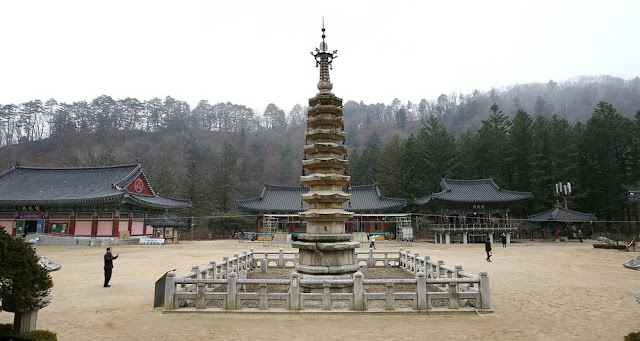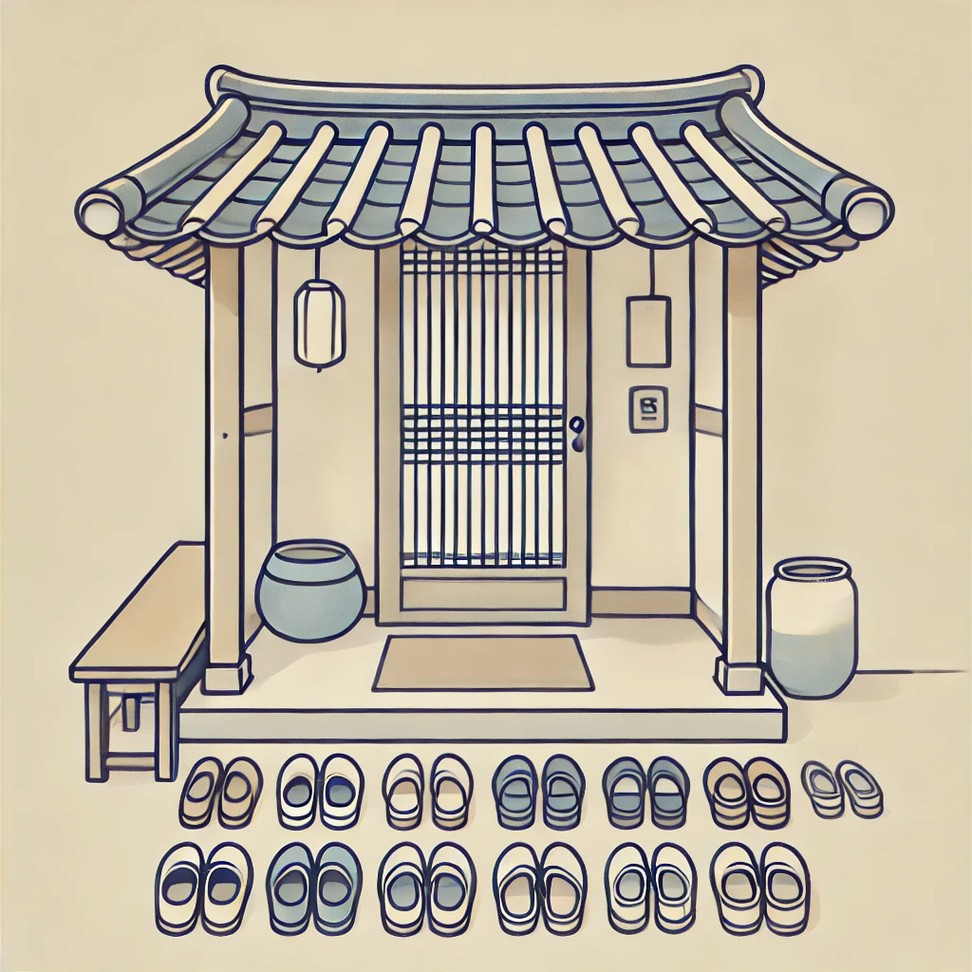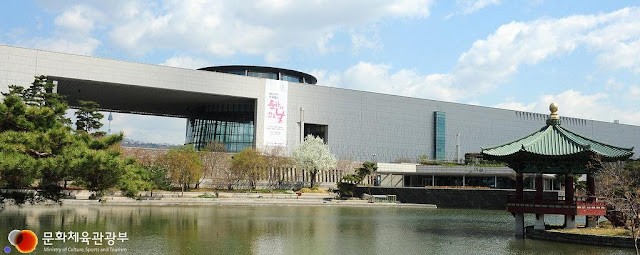Woljeongsa Temple
[Photo Credit] Flickr, Ministry of Culture, Sports, and Tourism, Jeon Han
TL;DR – Find Peace in Korea’s Temples
Whether you're in bustling Seoul or deep in the mountains of Gangwon-do, Korea’s temple stays offer a chance to pause, reflect, and reset.
From immersive experiences with chanting and prostrations to relaxed personal retreats in forest temples, this guide introduces 10 stunning temple stay options with costs, access tips, and booking guides.
Discover the path to peace—Korean style.
Seeking Inner Peace? Discover the Best Temple Stay Experiences in Korea
Are you looking to escape the hustle and bustle of modern city life and find inner peace? A temple stay offers a unique opportunity to experience tranquility by immersing yourself in Korea’s traditional Buddhist culture amidst stunning natural landscapes.
In this post, I will introduce 10 beautiful temples in Korea that offer temple stay programs. Each temple provides a different experience, and I’ll guide you through its unique features, available programs, locations, contact details, and transportation
options. Additionally, I’ll explain how you can make a reservation.
All the information provided is based on January 2025 data. The listed prices are for adults, and transportation fares indicate one-way costs.
Two Types of Temple Stay Programs
A. Experiential Temple Stay
An Experiential Temple Stay involves
participating in various programs offered by the temple. These typically include:
l Evening and dawn Buddhist ceremonies
l 108 prostrations
l Tea sessions with monks
l Guided temple tours
This program allows participants to engage
in Buddhist traditions and monastic life, providing a meaningful
cultural experience. It is usually available on weekends and is well-suited for
families and group visitors.
B. Restorative Temple Stay
A Restorative Temple Stay offers a more flexible schedule. Participants must only participate in essential rituals such as morning prayers and meals. The rest of the time is yours to spend freely—meditating, reading, or simply enjoying the peaceful surroundings.
This program is ideal for those seeking a break from daily life and an opportunity for personal reflection in nature.
10 Beautiful Temples in Korea for a Temple Stay Experience
(The order does not indicate ranking or preference.)
1. Naksansa Temple, Yangyang, Gangwon Province
Nestled in the foothills of Obongsan Mountain, Naksansa Temple offers a stunning view of the East Sea and a serene temple atmosphere. Visitors can witness breathtaking sunrises while experiencing the tranquility of the temple grounds. The temple stay program provides a range of options, from one-day experiences to two-night, three-day stays.
📍 Address: 100 Naksansa-ro, Ganghyeon-myeon, Yangyang-gun, Gangwon-do, South Korea
📞 Contact: +82-33-672-2417
🚍 How to Get There
l Express Bus: Seoul Express Bus Terminal → Yangyang Bus Terminal (Approx. 2 hours 15 minutes, Fare: ~20,000 KRW)
l Taxi: Yangyang Bus Terminal → Naksansa Temple (Approx. 10 minutes, Fare: ~10,000 KRW)
💰 Temple Stay Costs
l One-day program: 30,000 KRW
l 1-night, 2-day experiential stay: 90,000 KRW
l 2-night, 3-day experiential stay: 170,000 KRW
l Restorative stay: 70,000 KRW per night
2. Haeinsa Temple, Hapcheon, Gyeongsangnam-do
Designated as a UNESCO World Heritage Site, Haeinsa Temple is home to the Tripitaka Koreana, the world’s most complete collection of Buddhist scriptures carved on wooden blocks. The temple offers an immersive experience in history and tradition, with accommodations in traditional Korean hanok lodgings.
 |
| Haeinsa Temple [Photo Credit] KTO, V& |
📍 Address: 122 Haeinsa-gil, Gaya-myeon, Hapcheon-gun, Gyeongsangnam-do, South Korea
📞 Contact: +82-10-4763-3161 (Available from 09:00 to 17:00 KST)
🚄 How to Get There
Option 1: KTX + Subway + Intercity Bus
l KTX: Seoul Station → Dongdaegu Station (Approx. 1 hour 45 minutes, Fare: 43,500 KRW)
l Subway: Dongdaegu Station → Seobu Bus Terminal Station (West Daegu Intercity Bus Terminal)
l Intercity Bus: Seobu Bus Terminal → Haeinsa Temple (Approx. 1 hour 40 minutes, Fare: ~7,000 KRW)
Option 2: Express Bus + Intercity Bus
l Express Bus: Seoul Express Bus Terminal → West Daegu Intercity Bus Terminal (Approx. 3.5 – 4 hours, Fare: ~22,300 – 43,300 KRW)
l Intercity Bus: West Daegu Intercity Bus Terminal → Haeinsa Temple (Approx. 1 hour 40 minutes, Fare: ~7,000 KRW)
💰 Temple Stay Costs
l 1-night, 2-day weekend experiential stay: 100,000 KRW (includes an exclusive tour of the Tripitaka Koreana storage hall)
l 2-night, 3-day experiential stay: 200,000 KRW
l Restorative stay: 70,000 KRW per night
3. Bongeunsa Temple, Seoul
Located in the heart of Gangnam, Bongeunsa Temple is a 1,000-year-old Buddhist temple where modern amenities blend seamlessly with a traditional temple atmosphere. As one of the most accessible temples in Seoul, Bongeunsa provides a convenient and enriching experience for city dwellers. However, as of January 2025, a restorative temple stay is unavailable.
 |
| Bongeunsa Temple [Photo Credit] Wikimedia, Gael Chardon |
📍 Address: 531 Bongeunsa-ro, Gangnam-gu, Seoul, South Korea
📞 Contact: +82-2-3218-4846
🚇 How to Get There
l Subway: Line 9, Bongeunsa Station, Exit 1 (Approx. 5-minute walk to the temple)
💰 Temple Stay Costs
l 1-night, 2-day experiential stay: 100,000 KRW
l 2-night, 3-day experiential stay: 150,000 KRW (includes indoor tent accommodation)
4. Seonamsa Temple, Suncheon, Jeollanam-do
Seonamsa Temple is an ideal retreat for those seeking serenity with its picturesque gardens, ponds, and tranquil atmosphere. Unlike other temples, Seonamsa does not offer a structured experiential temple stay. Visitors who wish to stay overnight must contact the temple directly to arrange accommodations.
 |
| Seonamsa Temple [Photo Credit] Flickr, Jeon Han |
📍 Address: 450 Seonamsa-gil, Seungju-eup, Suncheon-si, Jeollanam-do, South Korea
📞 Contact: +82-10-8302-6250 / +82-61-754-6250
🚆 How to Get There
l KTX: Seoul Station / Yongsan Station → Suncheon Station (Approx. 2 hours 55 minutes, Fare: 44,300 KRW / 44,000 KRW)
l City Bus (Route 1 or 16): Suncheon Station → Seonamsa Temple (Approx. 1 hour)
💰 Temple Stay Costs
l Restorative stay: 50,000 KRW per night
5. Heebangsa Temple, Yeongju, Gyeongsangbuk-do
Situated in Sobaeksan National Park, Heebangsa Temple offers a peaceful escape into nature, surrounded by clear mountain streams and lush forests. The temple operates a restorative temple stay, where guests can participate in morning and evening Buddhist ceremonies and enjoy free time for personal reflection. However, as of January 2025, no experiential programs are available.
 |
| Heebangsa Temple [Photo Credit] Wikimedia Commons, Trainholic |
📍 Address: 264 Jugryeong-ro 1710beon-gil, Punggi-eup, Yeongju-si, Gyeongsangbuk-do, South Korea
📞 Contact: +82-54-632-5077
🚄 How to Get There
Option 1: KTX + City Bus
l KTX-Eum: Cheongnyangni Station / Seoul Station → Punggi Station (Approx. 1.5 – 2 hours, Fare: 21,600 KRW / 23,200 KRW)
l City Bus (Route 26): Punggi Station → Heebangsa Temple (Approx. 30 minutes)
※ Bus operates 5 times daily (08:50 – 17:35 KST)
Option 2: KTX + Taxi
l Taxi: Punggi Station → Heebangsa Temple (Approx. 15 minutes, Fare: ~15,000 KRW)
💰 Temple Stay Costs
l Restorative stay: 60,000 KRW per night
6. Bongseonsa Temple, Namyangju, Gyeonggi-do
Bongseonsa Temple is a peaceful retreat near Seoul, offering a quiet atmosphere for meditation and relaxation. It is beginner-friendly, making it a great option for those new to temple stays. Located close to Gwangneung National Arboretum, visitors can
enjoy a nature walk after their stay.
 |
| Bongseonsa Temple Lotus Festival Venue [Photo Credit] Flickr, Ministry of Culture, Sports, and Tourism |
📍 Address: 32 Bongseonsa-gil, Jinjeop-eup, Namyangju-si, Gyeonggi-do, South Korea
📞 Contact: +82-10-5262-9969
🚆 How to Get There
l Subway: Seoul Station → Jinjeop Station (Approx. 55 minutes)
l Taxi: Jinjeop Station → Bongseonsa Temple (Approx. 10 minutes, Fare: ~8,000 KRW)
💰 Temple Stay Costs
l One-day forest walking meditation: 30,000 KRW
l 1-night, 2-day experiential stay (Zen meditation): 70,000 KRW
l 1-night, 2-day experiential stay (Zen meditation + Lotus leaf rice meal): 100,000 KRW
l Restorative stay (single room): 100,000 KRW per night (up to 2 nights)
l Restorative stay (shared room): 70,000 KRW per night (up to 2 nights)
7. Magoksa Temple, Gongju, Chungcheongnam-do
A UNESCO World Heritage Site, Magoksa Temple is a tranquil retreat deep in the mountains, offering a perfect escape into nature. The temple stay program includes both experiential and restorative options. The experiential program offers yoga,
Buddhist prayer, and volunteer work experiences.
 |
| Magoksa Temple [Photo Credit] Wikimedia Commons, Jjw |
📍 Address: 966 Magoksa-ro, Sagok-myeon, Gongju-si, Chungcheongnam-do, South Korea
📞 Contact: +82-10-7110-6226
🚌 How to Get There
l Express Bus: Seoul Express Bus Terminal → Gongju General Bus Terminal (Approx. 1 hour 30 minutes, Fare: 9,300 – 18,400 KRW)
l Taxi: Gongju General Bus Terminal → Magoksa Temple (Approx. 30 minutes, Fare: ~30,000 KRW)
💰 Temple Stay Costs
l 1-night, 2-day experiential stay: 80,000 KRW (+10,000 KRW for yoga)
l 1-night, 2-day experiential stay: 70,000 KRW (Diamond Sutra chanting prayer experience)
l 2-night, 3-day volunteer stay: 10,000 KRW (Mandatory volunteer work required)
l 1-night, 2-day restorative stay: 70,000 KRW
8. Geumsansa Temple, Gimje, Jeollabuk-do
Near Byeonsanbando National Park, Geumsansa Temple boasts breathtaking open landscapes and a serene ambiance. The temple stay program includes meditation, tea ceremonies, and 108 prostrations.
📍 Address: 1 Moak-ro, Geumsan-myeon, Gimje-si, Jeollabuk-do, South Korea
📞 Contact: +82-10-8690-3308
🚌 How to Get There
l Express Bus: Seoul Central City Terminal → Gimje General Bus Terminal (Approx. 2 hours 45 minutes, Fare: 24,400 KRW)
l Taxi: Gimje General Bus Terminal → Geumsansa Temple (Approx. 30 minutes, Fare: ~30,000 KRW)
💰 Temple Stay Costs
l 1-night, 2-day experiential stay (weekends): 90,000 KRW
l Restorative stay: 70,000 KRW per night
9. Bulguksa Temple, Gyeongju, Gyeongsangbuk-do
A 1,000-year-old temple, Bulguksa, is an iconic UNESCO World Heritage Site where history, cultural heritage, and natural beauty come together. The temple stay program offers Buddhist experiences, meditation, prayer, and traditional tea ceremonies. Participants can also explore Seokguram Grotto, another UNESCO site, as part of the
experience.
 |
| Bulguksa Temple [Photo Credit] Wikimedia Commons, Basile Morin |
📍 Address: 385 Bulguk-ro, Gyeongju-si, Gyeongsangbuk-do, South Korea
📞 Contact: +82-10-2241-8966
🚄 How to Get There
l KTX: Seoul Station → Gyeongju Station (Approx. 2 hours 12 minutes, Fare: 49,300 KRW)
l Taxi: Gyeongju Station → Bulguksa Temple (Approx. 30 minutes, Fare: ~30,000 – 38,000 KRW)
💰 Temple Stay Costs
l 1-night, 2-day experiential stay: 150,000 KRW (Seokguram Grotto Thousand-Year Breath program)
l 1-night, 2-day experiential stay: 130,000 KRW (Thousand-Year Fragrance traditional music performance program)
l 1-night, 2-day experiential stay: 120,000 KRW (Thousand-Year Fragrance summer program)
10. Woljeongsa Temple, Pyeongchang, Gangwon-do
Nestled in the Odaesan Mountain range, Woljeongsa Temple is surrounded by stunning nature and a rich Buddhist heritage. The temple stay program offers meditation, tea ceremonies, and forest walking meditations, providing a peaceful and reflective retreat.
 |
| Woljeongsa Temple, Nine Story Pagoda [Photo Credit] Wikimedia Commons, Steve46814 |
📍 Address: 374-8 Odaesan-ro, Jinbu-myeon, Pyeongchang-gun, Gangwon-do, South Korea
📞 Contact: +82-507-1484-6606 (Korean) / +82-33-339-6607 (English)
🚄 How to Get There
l KTX: Seoul Station → Jinbu Station (Approx. 1 hour 40 minutes, Fare: 21,900 KRW)
l Intercity Bus: Jinbu Station → Woljeongsa Temple (Approx. 1 hour)
※ Operates 12 times daily: Departure times – 06:32, 07:50, 09:05, 10:00, 11:00, 11:50, 13:10, 15:10, 15:50, 17:00, 17:40
💰 Temple Stay Costs
l 2-night, 3-day experiential stay: 400,000 KRW (From Relaxation to Awareness program)
l Restorative stay: 100,000 KRW per night (Available for up to 5 nights)
Find Inner Peace with a Temple Stay!
The temple stay programs introduced here offer unique experiences and special activities to bring peace and tranquility to your mind. If you visit Korea, take a break from your busy travels and immerse yourself in nature and tradition.
“A single temple stay can bring peace to your mind, and a second one can change the direction of your life.”
❓ FAQ (Frequently Asked Questions)
Q1. Can foreigners join a temple stay in Korea?
Yes, absolutely. Many temple stay programs are designed with international visitors in mind and offer English-language support. Popular temples like Bongeunsa and Haeinsa have dedicated staff or translated materials.
Q2. What should I wear and bring to a temple stay?
Wear modest, comfortable clothes (long pants and sleeves). Bring toiletries, socks, and a towel. Bedding is usually provided. Avoid flashy accessories or bright colors out of respect for temple customs.
Q3. Are temple stays suitable for solo travelers or non-Buddhists?
Yes. Many solo travelers find temple stays peaceful and introspective. No religious background is required—programs focus on mindfulness, tradition, and cultural exchange.
Q4. What’s the difference between experiential and restorative temple stays?
Experiential programs include scheduled activities (meditation, tea ceremony, 108 bows), while restorative stays are more flexible—offering quiet time for reading, reflection, and walking in nature with only basic rituals required.
Q5. Is it okay to use my phone or take photos during a temple stay?
Phones should be kept on silent, and usage is discouraged during ceremonies or shared meditation times. Photography is often allowed in public areas but restricted in prayer halls or during certain rituals. Ask staff first.
Q6. Which temple is best for first-timers staying in Seoul?
Bongeunsa Temple in Gangnam is a great choice. It’s centrally located, beginner-friendly, and offers well-structured programs in English.
Q7. Are meals included in temple stays? What kind of food is served?
Yes, meals are included. Most meals are simple Buddhist vegetarian fare—rice, soup, and side dishes. No meat or alcohol is served, and meal times are quiet, reflective experiences.
[Appendix] How to Book a Temple Stay
The reservation process for a temple stay may vary slightly depending on the temple, but generally, you can follow these steps:
 |
| Haeinsa Temple Stay [Photo Credit] KTO, V& |
1) Use the Official Temple Stay Website
The official Temple Stay website,
managed by the Cultural Corps of Korean Buddhism, provides access to
temple stay programs at around 140 temples across Korea. You can browse
programs and make reservations directly through the website.
🔗 Book a Temple Stay Now (Temple Stay Official Website)
2) Select a Temple and Program
l Use the website to search for your preferred temple.
l Choose a program—either an experiential or restorative stay.
l Since each temple offers different schedules and activities, check the detailed program page on the temple’s website before booking.
l Most participating temples provide English descriptions of their programs.
3) Submit a Reservation Request & Payment
l Confirm your preferred schedule and number of participants before applying.
l Most temples allow online reservations and require a deposit or full payment.
l Some temples may request payment after reservation approval, so follow the instructions given by the temple.
4) Check Required Items & Guidelines
l Once your reservation is complete, review the list of required items and guidelines the temple provides.
l Typically, you must bring personal toiletries, comfortable clothing, and socks.
l Since the amenities provided vary by temple, check them in advance.
Additional Notes
l Popular temples may fill up quickly, so book beforehand to secure your preferred date.
l Some temples operate independent reservation systems besides the official website—check the temple’s official site or contact them directly if needed.
l Program details, costs, and schedules differ by temple, so review all information carefully before booking.


